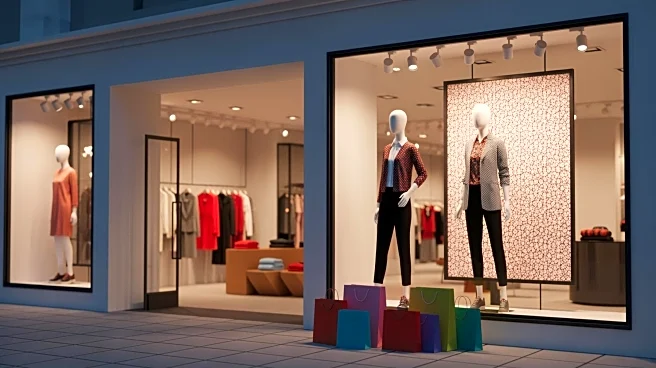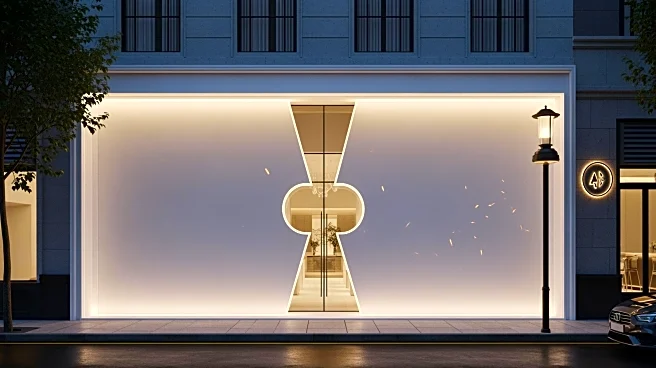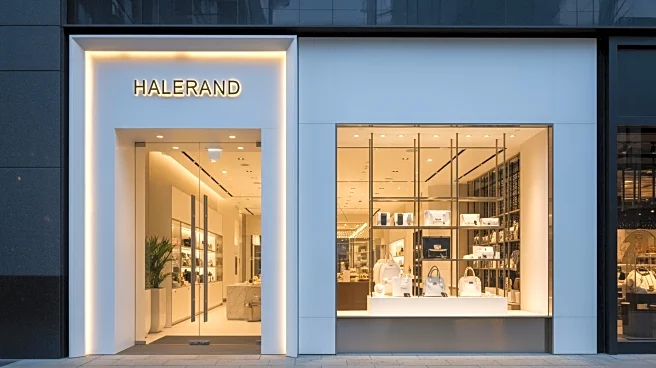What's Happening?
Gap has reopened its physical retail presence in the UK with a new store in London's Covent Garden, marking its return after closing all UK and Ireland stores in July 2021. The new two-story, 3,250-square-foot
shop is part of a joint venture with UK retailer Next, which combines Gap's global brand leadership with Next's omnichannel retail and logistics capabilities. Gap plans to open additional locations in London, including Westfield White City and a Gap Outlet store in Wembley Park Designer Outlet. The Covent Garden store features Gap's iconic product categories and celebrates London's creative community through cultural partnerships, including a curated vinyl selection and an edited library of photography, fashion, and art books.
Why It's Important?
Gap's return to the UK market signifies a strategic move to re-establish its brand presence in a key international market. The partnership with Next allows Gap to leverage local retail expertise and logistics capabilities, potentially enhancing its competitive edge in the UK. This move could influence other international retailers considering similar partnerships to navigate complex market dynamics. The reopening also reflects Gap's commitment to modernizing its customer experience and scaling its global retail strategy, which may impact its overall brand perception and sales performance in the region.
What's Next?
Gap's expansion in London is set to continue with the opening of additional stores in December 2025. The success of these new locations could lead to further expansion plans in the UK and potentially other international markets. Stakeholders, including customers and retail partners, will likely monitor the performance of these stores to assess Gap's ability to adapt to the evolving retail landscape. The collaboration with Next may also pave the way for more innovative retail strategies and partnerships in the future.
Beyond the Headlines
Gap's decision to retain ownership of its Covent Garden building despite previous store closures highlights a long-term strategic vision for its physical retail presence. This approach underscores the importance of location and brand identity in retail strategy. The store's design and cultural partnerships reflect a shift towards experiential retail, aiming to engage customers beyond traditional shopping experiences. This trend may influence broader retail industry practices, emphasizing the integration of cultural and community elements in store design.











